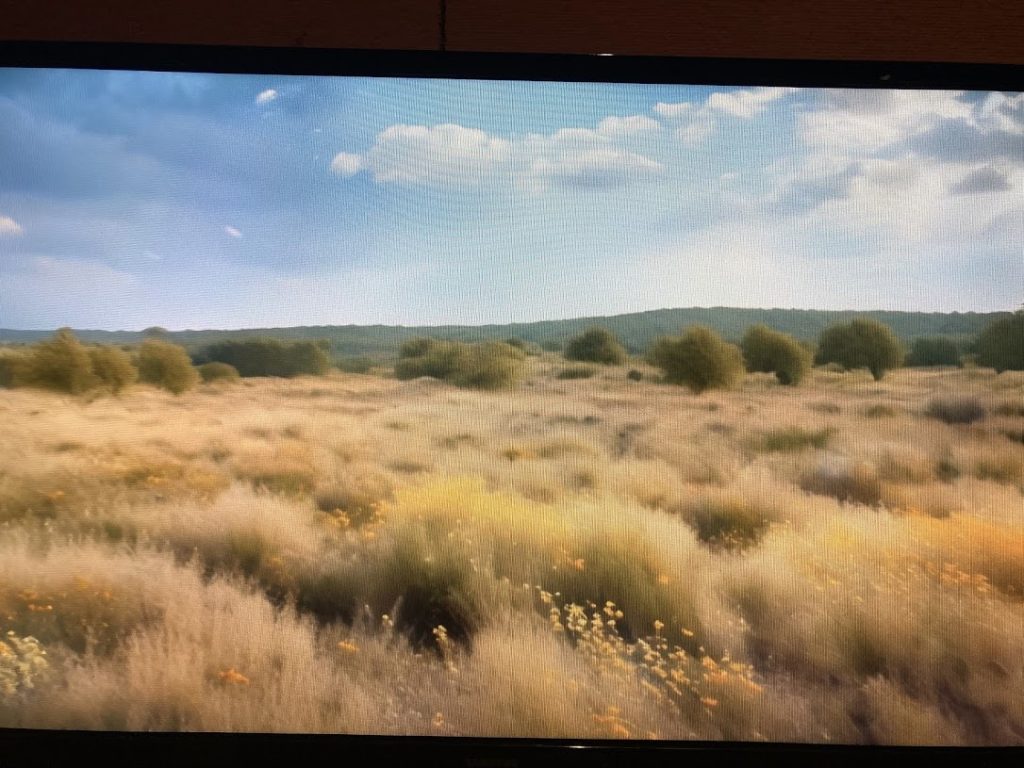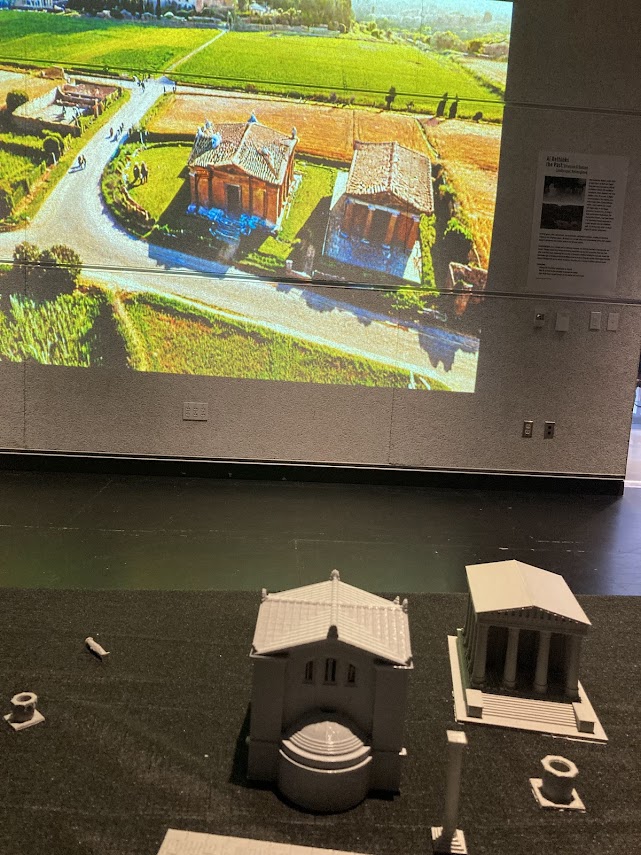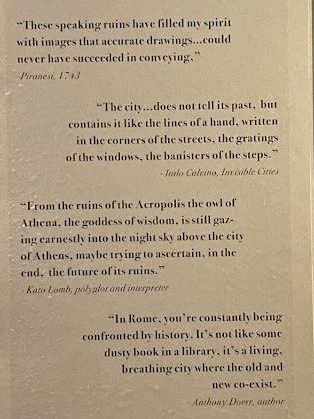You are looking at a field of fluffy, golden grass dotted with yellow flowers. There are trees in the background and mountains beyond that. Where are you?
Now you’re facing a terracotta sarcophagus. Where are you? When are you?
A new exhibit in the Rubenstein Arts Center uses AI to bring viewers into ancient Roman and Etruscan landscapes spanning 1300 years, from about 1000 BCE to 300 CE. (The field is Roman, the sarcophagus Etruscan.)

Along one wall, screens show springtime landscapes representing ancient Rome. The written prompts AI used to create each image include detailed information on plant species found in each landscape. One titled “Sedges in shallow water of an ephemeral pond” mentions “sparse trees of alder (Alnus glutinosa), white willow (Salix alba), and white poplar (Populus alba), and few herbaceous plants.” You can view examples of the written prompts on the exhibit’s website, AI Landscapes – Rethinking the Past.

Historians know what plants were likely to be in these landscapes because of evidence from preserved pollen grains. Different species have distinct pollen shapes, which makes it possible to identify plants even centuries or millennia later.

An interactive display near the front of the room has a camera pointed at props like building models, pillars, toy horses, and pieces of styrofoam. An AI model reinterprets the camera’s images to create hypothetical scenes from ancient Rome. “See how the columns get reinterpreted as statues?” says Felipe Infante de Castro, who helped program the AI. The AI attempts to add detail and backgrounds to simple props to create realistic scenes. “The only thing that we’re forcing,” he says, “are essentially shapes—which it may or may not respect.” It may reinterpret a hand as a horse’s head, for instance, or a strangely shaped building.
The model is more precise with plants than buildings, says Augustus Wendell, Assistant Professor of the Practice in Art, Art History and Visual Studies and one of the exhibit designers. Latin names for plants are widely used in modern taxonomy, and the AI is likely to have encountered more plants in its training than ancient Roman architecture styles. The AI is a “generic model” asked to “draw on its presuppositions” about Roman buildings, says Felipe. It “wasn’t trained on specifically Roman landscapes…. It just tries its best to interpret it as such.” The results aren’t always completely authentic. “In the background,” Wendell says, “the city is often quite modern Tuscan, not at all ancient Roman.”

“We can use an AI,” Felipe says, “to give us a representation of the past that is compatible with what we believe the past should look like.”
In another part of the exhibit, you can use an AI chatbot to talk to Pliny the Elder, a Roman scholar. Caitlin Childers, who helped design the exhibit, explains that the chatbot was trained on Pliny the Elder’s 37 books on natural history. When I asked Pliny what the chatbot was designed for, he told me, “I do not have the ability to access external articles or specific information beyond the knowledge I possess as Pliny the Elder up to the year 79 AD.”
He can give you information on plants and their uses in ancient Rome, but when I asked Pliny what his favorite plant was, he couldn’t decide. “I find it challenging to select a favorite plant among the vast array of flora that the Earth provides. Each plant contributes uniquely to the balance and beauty of nature.” According to Professor Maurizio Forte, “This AI chatbot can speak in English, French, Italian and also in Latin! So it is possible to formulate questions in Latin and requiring a response in Latin or ask a question in English and expect a reply in Latin as well.”
A virtual reality headset lets you see a three-dimensional model of an Etruscan sarcophagus. The real sarcophagus is encased in glass in the Villa Giulia Museum in Rome, but the virtual reality experience puts it right in front of you. The experimental VR-AI installation also allows viewers to ask questions to the sarcophagus out loud. The sarcophagus has a statue of a man and woman, but historians don’t know whose ashes are buried inside. “It’s not important how they look,” says Forte. “It’s important how they want to be.”
The sarcophagus would have been a “symbolic, aristocratic way to show power,” Forte explains. The design of the sarcophagus represents an intentional choice about how its owners wanted the world to see them after their death. “This is eternity,” Forte says. “This is forever.”

The exhibit, called “Rethinking the Past,” is on display at the Rubenstein Arts Center until May 24.
